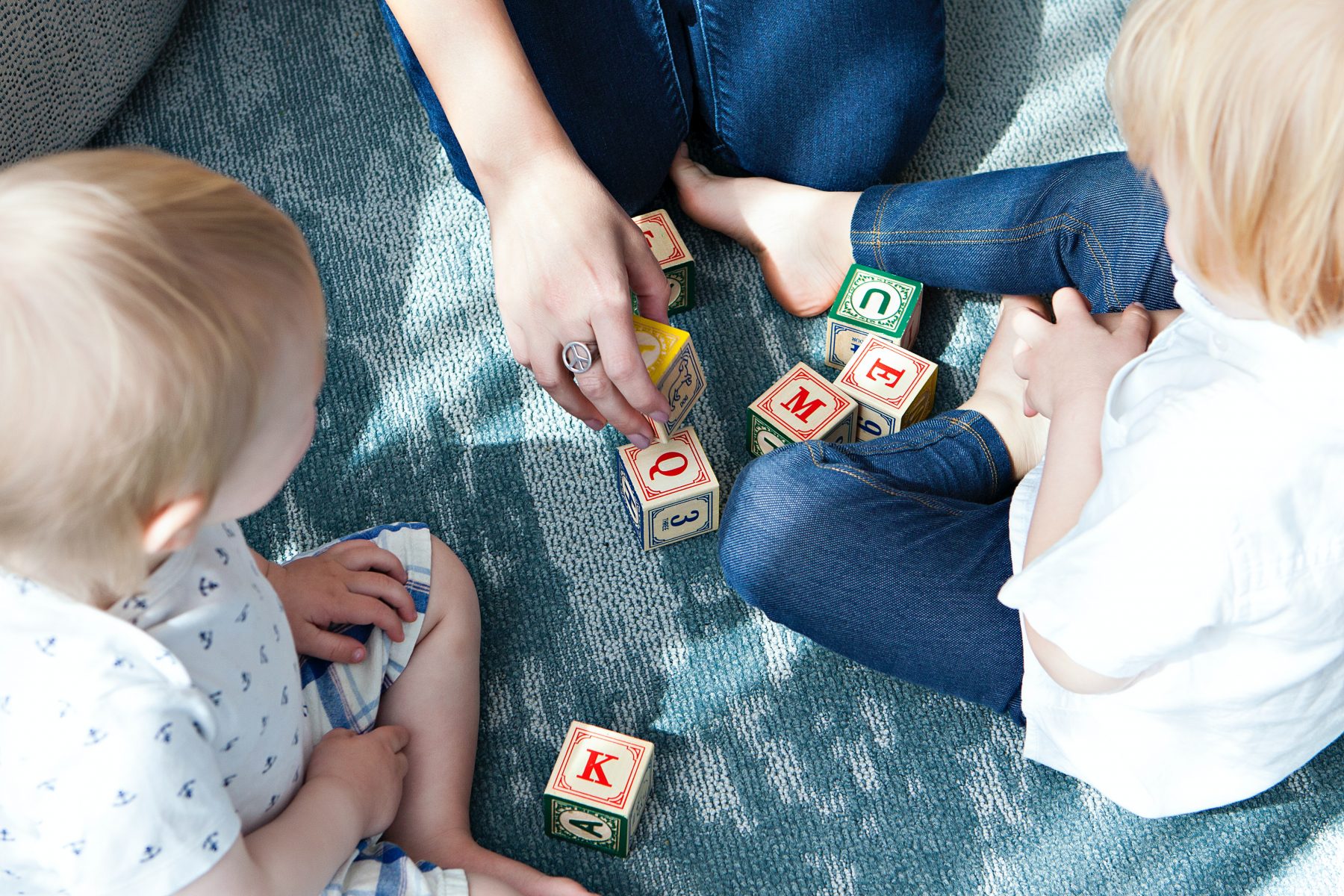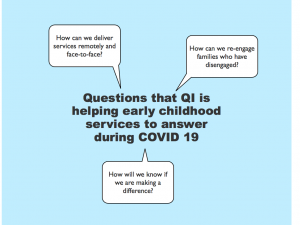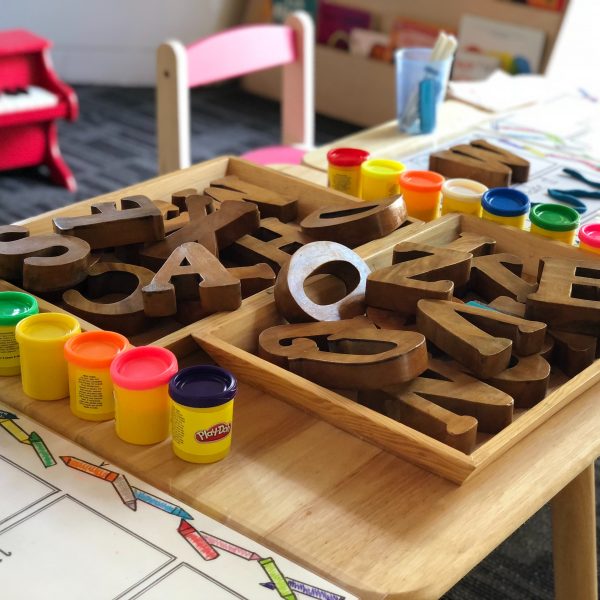How quality improvement can support services to adapt to COVID-19

The article below is part of the ‘Learning and changing with quality improvement’ series. It explores the role of quality improvement in helping to redesign and enhance the services and systems that support children and families, authored by Lauren Heery, Senior Project Coordinator in the Service Systems Innovation Team at the Centre for Community Child Health.
Since 2016, the Centre for Community Child Health has been engaged by the Victorian Department of Education and Training’s Best Start program to maximise participation in Maternal and Child Health and kindergarten services through the use of quality improvement. Together with Best Start facilitators and departmental staff, the team continues to learn about how to best adapt this methodology to the community setting and its ability to deliver improvements.
The impact of COVID-19 on service delivery
In my previous post, I outlined how COVID-19 has made the use of quality improvement (QI) more relevant than ever, due to the need for early childhood services to rapidly adapt. In Victoria this has continued to be the case with a second wave of COVID-19 cases causing reimposed restrictions throughout July, August and September. Supported playgroups have been unable to run as normal, kindergarten attendance has dropped and, in metropolitan Melbourne, kindergartens were closed for some of this period to all but essential workers and those experiencing vulnerability.
As we’ve worked alongside and supported the three Best Start ‘innovation sites’ of Hume, Casey and Latrobe during the pandemic we’ve learnt about the ways in which services have been using QI to adapt.
Typically services have used QI to:
- redesign their service whether for remote or face-to-face delivery;
- work out how to connect with families who have disengaged; and,
- think differently about how they’re measuring their impact.

Figure 1: Questions that QI is helping early childhood services to answer during COVID-19
Ways in which services are adapting using QI
Using a series of Plan-Do-Study-Act cycles to design remote kindergarten and Supported Playgroup programs.
Many kindergartens and supported playgroups have responded to the pandemic by providing a remote learning program.
In Hume, small tests of change have been used to understand how to best deliver their remote learning program. This has included testing different methods of engaging families (e.g. phone calls, text messages, emails, social media posts) and different ways of providing activities (e.g. physical play packs, instructions on a website). Educators have discovered that in most cases, phone calls have been most effective to engage families, but that text messages can be useful when the family can’t be reached by phone.
Using Plan-Do-Study-Act cycles to adapt the delivery of face-to-face kindergarten
With kindergarten attendance much lower than usual, some services have also adapted the delivery of their face-to-face program.
Where numbers of children attending in person were very low in each room, one multi-room kindergarten service in Casey tested combining children across separate kindergarten rooms to allow staff to more efficiently deliver both in-person and remote services. This adaption provided the opportunity for a large staff team to share the workload and divide their time equitably across the service between working from home, support for in-home learning activities, and time attending the kindergarten site.
The test showed the adaptation to be successful, allowing staff to collaborate on the delivery of COVID-19 learning programs, children to form new friendships and families to increase their comfort with all staff at the service. With the success of the test during COVID-19 Stage 3 restrictions, the idea was spread across other multi-room services in Casey during COVID-19 Stage 4 restrictions.
Using Plan-Do-Study-Act cycles to create a process for checking in on children who aren’t attending kindergarten
When children aren’t attending kindergarten, either in person or via a remote program, some kindergartens in Casey and Latrobe have been using PDSA cycles to test different approaches to reaching out to families. This has included hand-delivered letters and home learning materials with personalised notes. Services have discovered that families respond well to being personally contacted, replying and continuing to stay in contact with the kindergarten as a result.
Engagement efforts for children not participating in face-to-face or online activities were further adapted when Stage 4 restrictions made picking up and dropping off learning materials even more challenging. In Casey, some services started online engagement with the children and other services posted letters and learning packs to families.
Using run charts to question what “good kindergarten attendance” looks like during COVID-19
Prior to COVID-19, one of the main aims of Best Start sites was to improve the attendance of children in kindergarten. In many sites, this data is visualised in a run chart that enables stakeholders to identify whether attendance rates are rising or falling in relation to their improvement efforts. Due to stage 3 and 4 restrictions however, these run charts have typically shown decreasing attendance regardless of the efforts made.
This has led to conversations in improvement teams in all three sites about what “good kindergarten attendance” looks like during this period. In other words, should families’ engagement with remote learning be measured alongside in-person attendance? Should services’ efforts to reach out to families not engaging in face-to-face or remote learning be measured and considered an indicator of success? For some services, this has highlighted the importance of fostering children’s engagement, and in Casey, they have recently trialled bringing services together to share experiences of fostering engagement.
Through the Best Start innovation sites, we are learning about the versatility of QI to respond not only to usual challenges in service delivery but also to significant and unpredictable challenges like the pandemic. It is exciting to see the growing confidence of services in these sites in using QI to better engage and support children and families, no matter what the circumstances.
Thanks to Leah Taylor (Casey Best Start Facilitator), Sara McAlister (Latrobe Best Start Facilitator), Kelly Brand (Hume Best Start Facilitator) and colleagues in their sites for their review of this article.
If article sparked your interest in how QI could help your program, organisation or community initiative learn and change, please contact Lauren Heery via email: [email protected]
This article originally appeared on the Centre for Community Child Health website, and has been reproduced here with author permission. To access the original coverage of this story, please see here.
Popular

Workforce
Policy
Quality
Practice
Provider
Research
ECEC must change now, our children can’t wait for another inquiry
2025-07-02 07:47:14
by Fiona Alston

Practice
Provider
Quality
Workforce
Leading with Curiosity: How distributed leadership is redefining the future of early childhood education
2025-07-03 07:42:07
by Contributed Content

Events News
Workforce
Marketplace
Practice
Quality
Provider
Research
An exclusive “Fireside Chat” with ECEC Champion Myra Geddes
2025-07-01 11:25:05
by Fiona Alston













